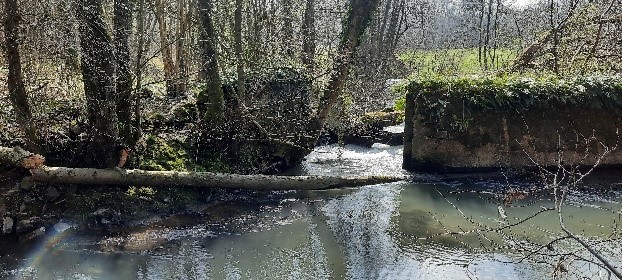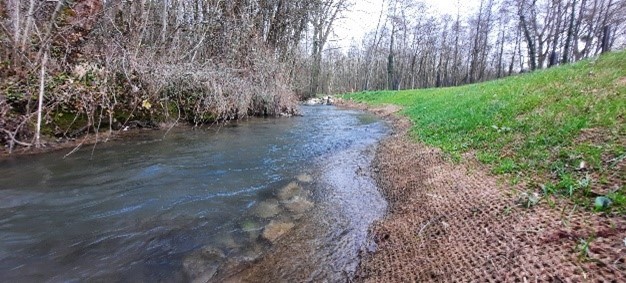Dismantling of the Bellefontaine Dam and of its discharge weir
The river basin
River Lys is a waterway of the Pas-de-Calais department located in the northern of France (Figure 1). Its length is 40 km which extends to 102 km along with its tributaries. It springs from the village of Lisbourg and flows into the “channelized Lys” in the Moulin le Comte village. It drains a watershed covering 318 km² (Figure 2) and its main tributaries are the Traxenne, the Surgeon, the Vilaine, and the Laquette rivers. Lys is a limestone river, classified as a first-category river and characterized by rapid streams, that is typical of salmonid rivers. The main fish species found at River Lys are indeed salmonids, Atlantic salmon (Salmo salar) and Brown trout (Salmo trutta). A relic population of the worldwide critically endangered European eel (Anguilla anguilla) can also be found in the river.




















